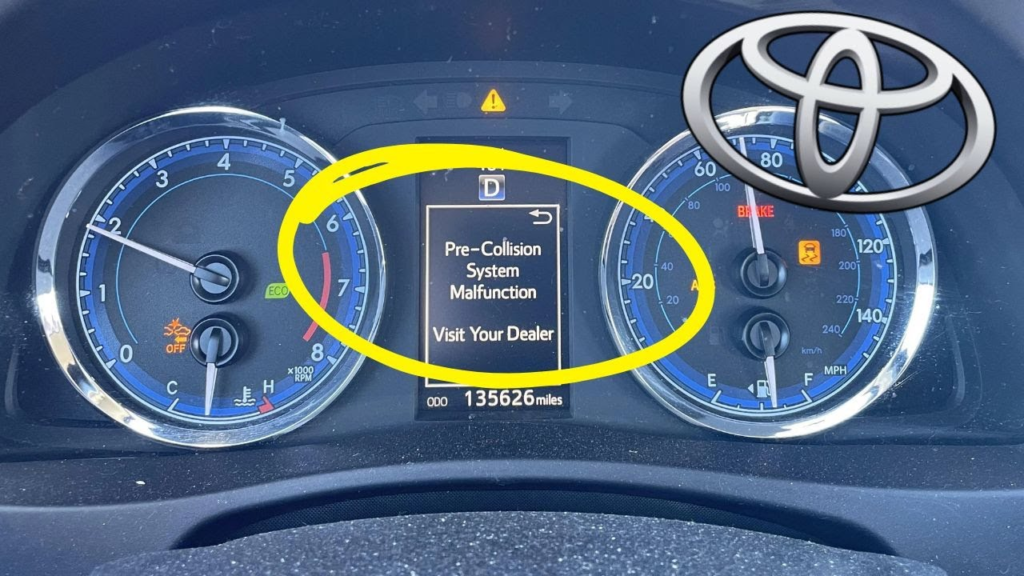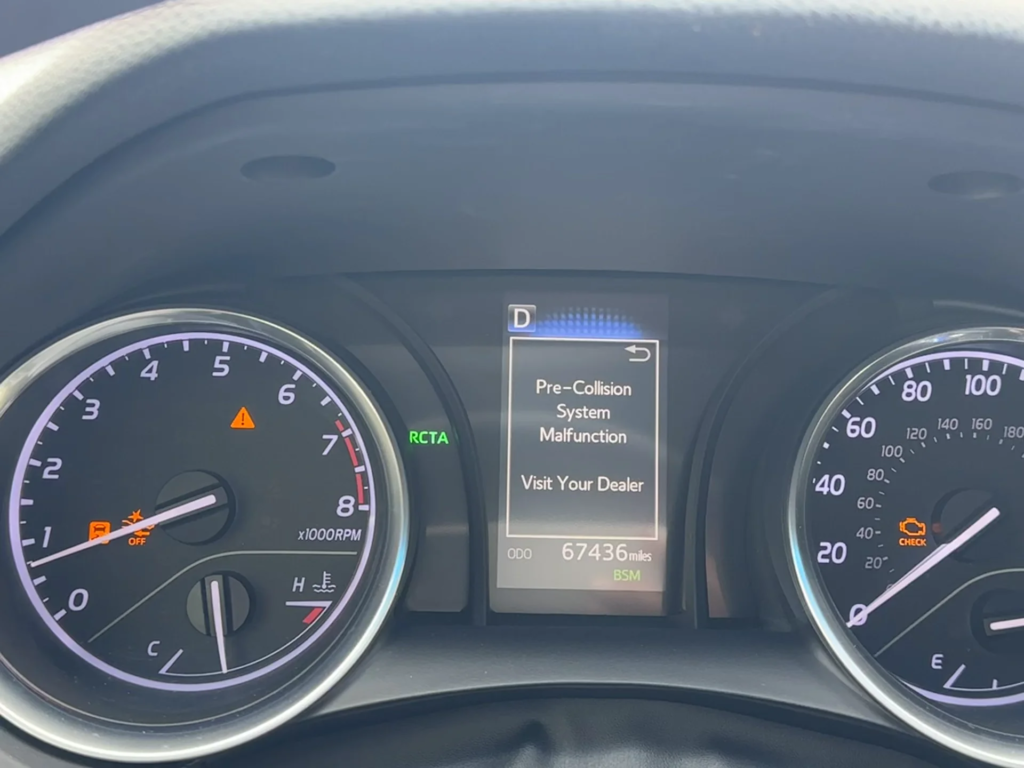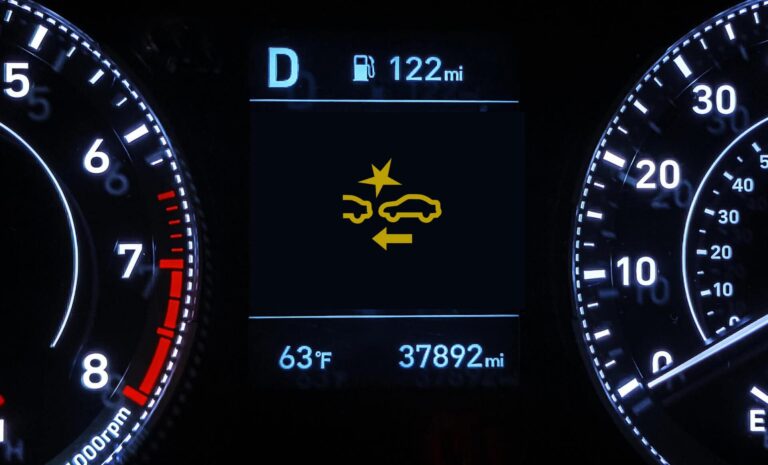Modern vehicles are equipped with advanced safety technologies to protect drivers, passengers, and pedestrians. Among these innovations, the pre collision system stands out as a crucial feature, designed to minimize accidents and enhance road safety. However, like any technological system, it is not immune to malfunctions. A pre collision system malfunction can disrupt the smooth operation of your car and compromise safety, leaving drivers confused and concerned. This article will explore the causes, symptoms, and solutions for a pre collision system malfunction, ensuring you have the information you need to address this issue effectively.
What Is a Pre Collision System?
A pre collision system (PCS) is an advanced driver-assistance feature designed to prevent or reduce the severity of collisions. Using sensors, cameras, and radar, the system monitors the road and detects potential obstacles, such as vehicles or pedestrians. If the system identifies an imminent collision, it may:
- Alert the driver through visual or auditory signals.
- Automatically apply the brakes to reduce speed.
- Adjust the vehicle’s steering to avoid the obstacle.
While the PCS is highly effective in enhancing safety, a pre collision system malfunction can hinder its functionality, raising safety concerns.
Symptoms of a Pre Collision System Malfunction
When a pre collision system malfunction occurs, the vehicle typically provides warning signs to alert the driver. These symptoms include:
- Dashboard Warning Lights
Most vehicles display a warning message or icon on the dashboard, often labeled as “Pre Collision System Malfunction” or “PCS Malfunction.” - Inconsistent Alerts
The system may trigger false alarms, such as unnecessary warnings or abrupt braking, even when no obstacle is present. - Lack of Response
A malfunctioning PCS may fail to activate during critical situations, leaving the driver solely responsible for avoiding a collision. - Sensor Errors
Sensors may become dirty, misaligned, or damaged, causing the system to misinterpret road conditions. - Loss of Other Safety Features
In some vehicles, a pre collision system malfunction can disable other safety features, such as adaptive cruise control or lane departure warnings.
Common Causes of a Pre Collision System Malfunction

A pre collision system malfunction can result from various issues, ranging from environmental factors to hardware or software problems. Below are the most common causes:
1. Sensor Obstruction or Damage
The PCS relies on sensors and cameras to detect obstacles. Dirt, snow, ice, or debris can obstruct these components, leading to inaccurate readings. Additionally, physical damage to the sensors can cause the system to malfunction.
2. Software Glitches
Modern vehicles operate using complex software systems. Bugs or glitches in the PCS software can cause it to behave unpredictably, triggering a malfunction.
3. Calibration Issues
Improper calibration of sensors and cameras can prevent the system from accurately detecting obstacles. Calibration issues may occur after repairs, accidents, or even routine maintenance.
4. Electrical Problems
A fault in the vehicle’s electrical system, such as a loose connection or a damaged wire, can disrupt the PCS’s functionality.
5. Environmental Conditions
Extreme weather conditions, such as heavy rain, fog, or snow, can interfere with the sensors and cameras, causing a pre collision system malfunction.
6. Outdated Firmware
Manufacturers periodically release software updates to improve the PCS’s performance. Failing to install these updates can lead to compatibility issues and malfunctions.
How to Troubleshoot a Pre Collision System Malfunction
Addressing a pre collision system malfunction requires a systematic approach. Follow these steps to diagnose and resolve the issue:
1. Inspect and Clean Sensors
Start by checking the vehicle’s sensors and cameras for dirt, debris, or damage. Use a soft cloth and mild cleaning solution to clean them. Avoid using abrasive materials that could scratch the lenses.
2. Restart the Vehicle
Sometimes, restarting the vehicle can reset the PCS and resolve temporary glitches. Turn off the engine, wait a few minutes, and restart the car to see if the warning disappears.
3. Check for Firmware Updates
Visit the manufacturer’s website or contact your dealer to check for available software updates for your vehicle. Installing the latest firmware can fix known bugs and improve system performance.
4. Inspect the Electrical System
Examine the vehicle’s wiring and connections for signs of wear or damage. If you suspect an electrical issue, consult a professional mechanic to avoid further complications.
5. Schedule a Professional Diagnosis
If the issue persists, schedule an appointment with a certified technician. They can use diagnostic tools to identify the root cause of the pre collision system malfunction and recommend appropriate repairs.
Preventing Pre Collision System Malfunctions
While some malfunctions are unavoidable, you can take proactive steps to minimize the risk of a pre collision system malfunction:
- Regular Maintenance: Schedule routine inspections to ensure all components of the PCS are in good working order.
- Keep Sensors Clean: Regularly clean the sensors and cameras to prevent obstructions from dirt or debris.
- Avoid Harsh Conditions: Whenever possible, avoid driving in extreme weather that could interfere with the PCS’s functionality.
- Follow Manufacturer Guidelines: Adhere to the manufacturer’s recommendations for maintenance, calibration, and software updates.
- Be Cautious After Repairs: If your vehicle has undergone repairs or modifications, ensure that the PCS sensors are recalibrated by a professional.
When to Seek Professional Help
While some PCS issues can be resolved through basic troubleshooting, others require professional expertise. Seek help if:
- The warning light remains on despite cleaning and restarting.
- The PCS frequently triggers false alarms or fails to respond during emergencies.
- The malfunction is accompanied by other electrical or mechanical issues.
Certified technicians have access to specialized diagnostic tools and training to accurately identify and repair pre collision system malfunctions.
Conclusion

A pre collision system malfunction can be a concerning issue, but understanding its causes and solutions can help you address it effectively. By recognizing the symptoms, troubleshooting common problems, and seeking professional assistance when needed, you can ensure the continued safety and functionality of your vehicle. Regular maintenance, proper cleaning, and adherence to manufacturer guidelines are essential to preventing future malfunctions and keeping your pre collision system in optimal condition.
Whether you’re dealing with a temporary glitch or a more serious issue, taking prompt action to resolve a pre collision system malfunction is crucial for maintaining road safety and peace of mind. If you’re ever unsure about the severity of the problem, don’t hesitate to consult a professional for guidance and support.

